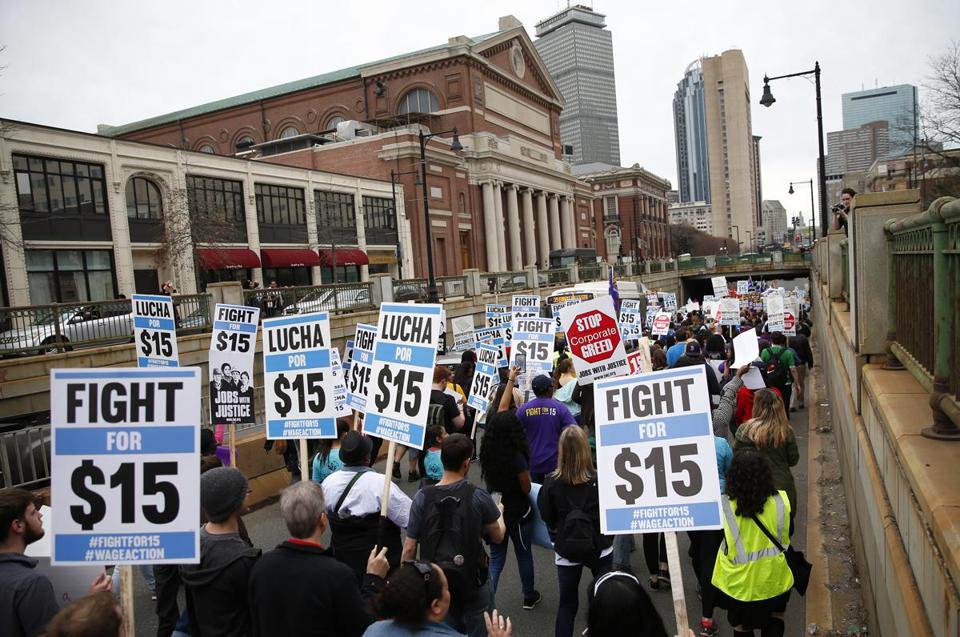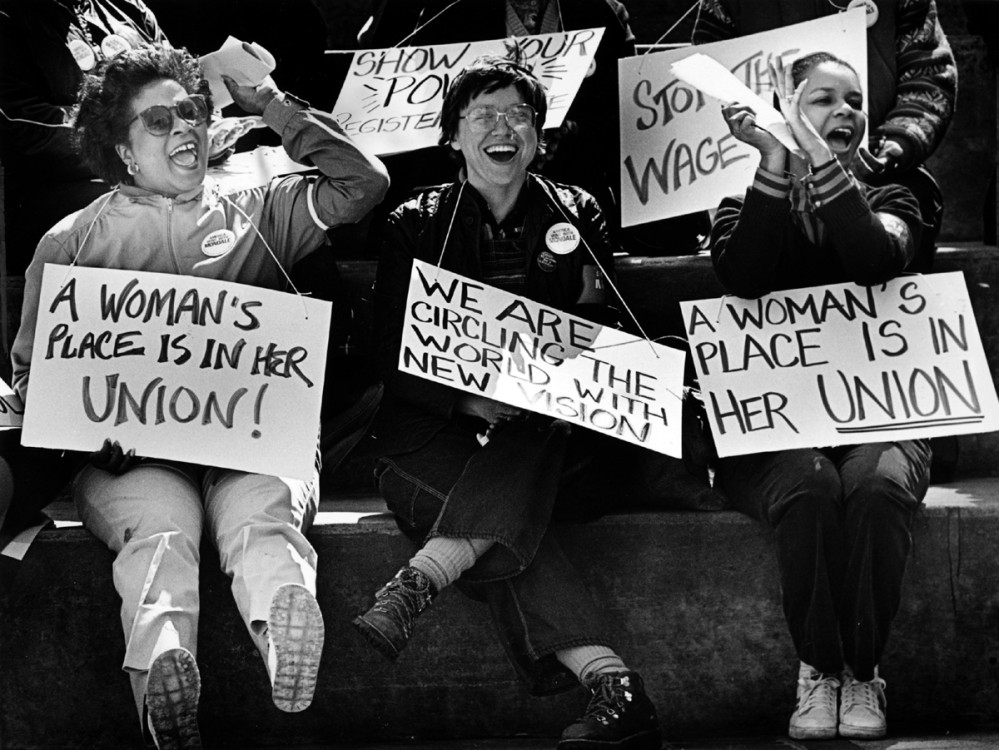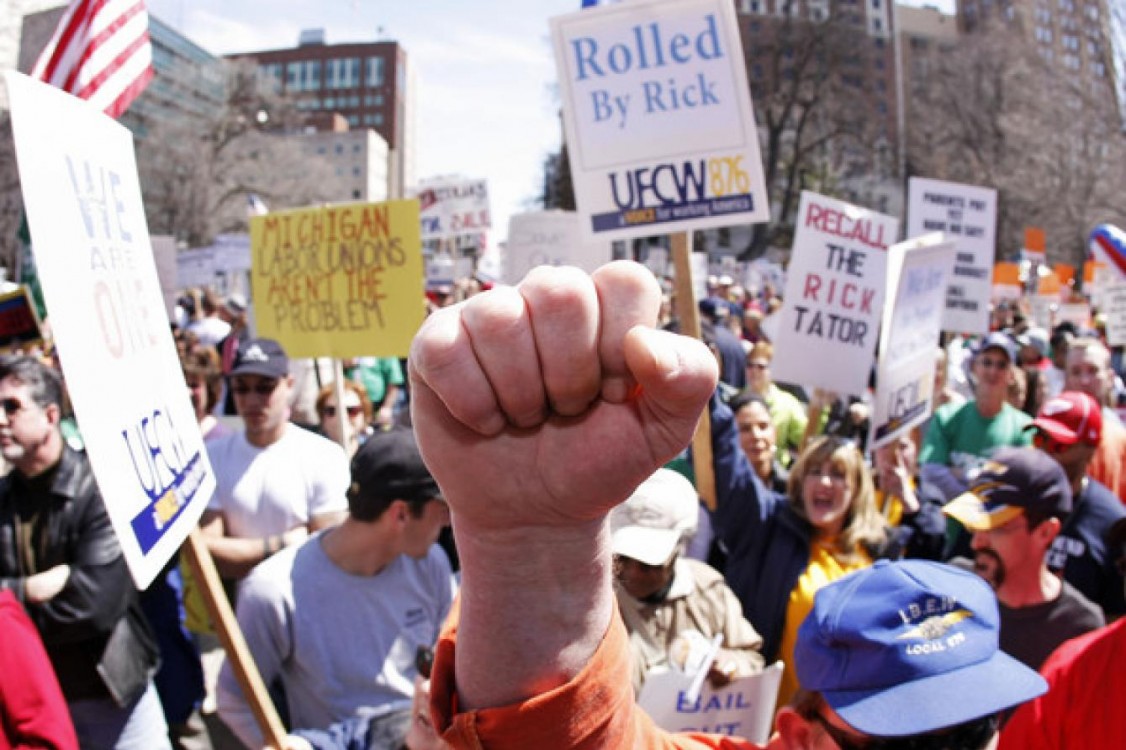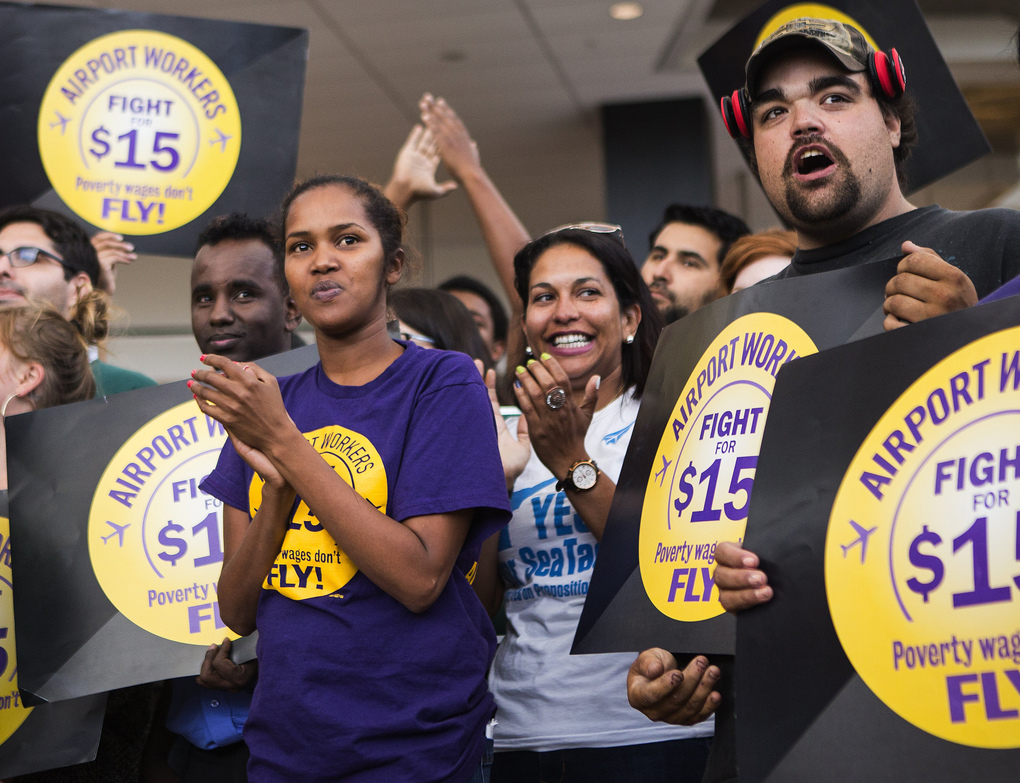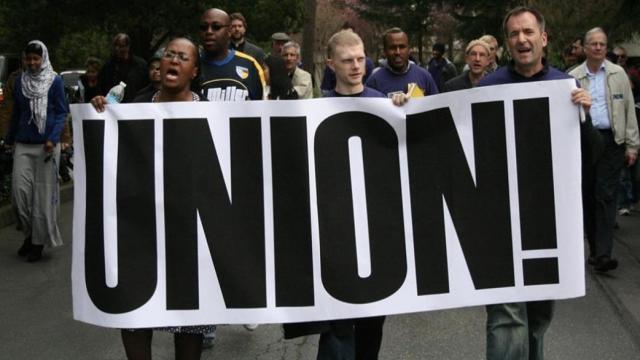
“For unions in deep trouble, straining to find a way forward in today’s reality of runaway corporate profits and mounting human impoverishment, the Sea-Tac experience points the way toward the great possibilities that exist in a reimagined labor movement.” - Jonathan Rosenblum
Over the past several decades with the decline of manufacturing and the worsening of labor law, organized labor in the United States has experienced a critical decrease in numbers and clout, begging the question: Can labor rebuild its strength in a period characterized by continuing de-industrialization and an increasingly hostile environment for organizing workers?
In "Beyond $15: Immigrant Workers, Faith Activists, and the Revival of the Labor Movement," (Beacon Press, 2017), Jonathan Rosenblum argues that it is possible and uses the story of the fight for a $15 minimum wage in SeaTac, Washington, to explain how. For those interested in what labor can do and where the opportunities may lie, "Beyond $15" is a book filled with lessons learned and strategic insights. But Rosenblum also tells a dramatic story filled with personal vignettes of key figures as well as a play-by-play of the action at strikes, marches, and corporate board meeting disruptions.
It is a story told from the vantage point of individual workers’ lives as well as from an analytical distance. Rosenblum’s intention is to provide insights into how to rebuild the labor movement in the 21st century, thus a key question he asks is: What are unions for? And more precisely, do they exist to negotiate the best possible deals for workers with management.
By far the most common union model in the U.S. is what Rosenblum calls “business unionism,” whereby members pay dues in exchange for services provided by the union including contract negotiations, grievance handling, and work conditions. In effect, unions serve as a third party between workers and management, although they often do other things such as endorse political campaigns and advocate for reforms in labor laws and other legislation relevant to workers.
The second view of unions, which Rosenblum subscribes to, is that they should be more militant organizations that “challenge the profit system and fight for the interests of the entire working class.” In this view, unions are fundamentally about building power to change the system. They should go far beyond negotiating the best possible deal for workers to engage in a broader struggle that changes the balance of power in capitalist society. In this more militant view, workers lead the union rather than the other way around.
Background to the Sea-Tac Labor Campaign
Social movements almost always emerge from an environment of social or economic grievance, and the 2014-15 campaign at and around the Seattle-Tacoma International Airport (Sea-Tac) was no exception. The de-regulation of the airline industry in the 1970s and major restructuring in the early 2000s fundamentally changed the balance of power between labor and management.
Before de-regulation, government oversight of airline routes and ticket prices leant stability to the industry. Airlines were guaranteed modest profits and most ground and related jobs were held by union workers with decent salaries and benefits. Union density in the air transport sector nationwide was nearly 50 percent. But after de-regulation, the incentives for management shifted because there was a new opportunity to make much greater profits. In addition, changes to corporate bankruptcy law, which allowed executives of “failing” corporations to retain their jobs, allowed management to use bankruptcy as a business strategy and a lever to force concessions from workers.
In the difficult years after the 9/11 attacks, airline after airline declared bankruptcy and used the ensuing restructuring period to re-negotiate new contracts with pilots and other workers. At the same time, new, non-unionized firms emerged in the various ground support operations such as baggage handling, fueling, airplane cleaning and maintenance. The workers in these contracting companies were paid far less than the unionized workers who had done those jobs previously. In short order, as part of the restructuring process during bankruptcy, most unionized ground support workers were fired and replaced with minimum wage contract workers.
As these changes were taking place, a large number of immigrants, many from East Africa, had moved to the town of SeaTac that surrounds the airport to work in the various ground support operations. They were an ideal workforce for the contracting firms because they were largely isolated from the rest of American society and were not inclined to speak out. So they worked long hours, sometimes at multiple low-wage jobs with few if any benefits, tried to stay on the good side of management, and struggled to get by.
The Spark and the Response
Eventually grievances started to accumulate. Rosenblum tells many stories of workers forced to accept dangerous situations such as having to use faulty devices for cleaning or fueling airplanes while being pressured by management to work faster. The spark was finally lit at a Hertz rental car counter at the airport in 2011, when managers told the Muslim workers they had to clock out when they stopped work for a few minutes to perform noon prayers. This was a direct affront to their dignity, and it reverberated through the community.
The outrage energized the heretofore slow organizing that had been taking place over the preceding few years and induced many workers to become active in organizing, picketing at the airport and confronting management of the contracting companies. Workers also took their claims to the airlines, focusing particular attention on Alaska Air. Rosenblum gives a vivid, on-the-ground account of these actions and the people involved. He also describes in detail many of the challenges organizing a diverse, immigrant community during this period.
The Ballot Initiative
The organizing and actions at this stage were aimed at inducing the ground services contracting companies to recognize a new union, and to get Alaska Air to put pressure on these contractors to pay fair wages and provide benefits to their workers. At the same time, and more directly, the workers came into conflict with airport authorities about the right to protest. Ultimately, their attempts to get their rights from these entities failed.
In response, they decided to pursue a ballot initiative for the next election to guarantee a $15 an hour minimum wage for the town of SeaTac as well as paid sick leave and other benefits. This marked a new period of organizing as the conflict widened, bringing in local businesses that did not want to increase wages as well as long-time white residents, many of whom were aligned with the Tea Party. Their argument was that everyone should “pay their dues.”
Rosenblum finds these views instructive for building broader working class solidarity. The myth about one’s ability to get ahead by working hard has become strong in established working-class communities, partly because these narratives are endlessly repeated in the mainstream media and conservative political culture. He observes there was an “absence in their lives of any countervailing working-class ideology that put people’s needs before profits, that preached class solidarity and mutual aid.”
Without working class solidarity, unions themselves are prone to be seen as “special interests,” a narrative on display constantly in national political discourse. Rosenblum makes the critical observation that this view is buttressed by the very model of “business unionism” so common in the U.S. In this model, unions limit their activities to serving their members only, with little concern for the rest of the workforce. Thus, success by one union in one industry or factory only reinforces divisions within the working class and makes it easier for conservative forces to brand them as “special interests."
In the end, after many twists and turns colorfully described by Rosenblum, the ballot initiative passed by a narrow margin. Organizers and workers then tried to repeat this success in Seattle. But an important split emerged in the campaign among activists and organizers concerning the correct strategy, a division that has broader implications. On the one side were the established labor organizers and their political allies who wanted to negotiate with the city council. On the other side were the activists who thought that the best approach was to build power through organizing, collective action, media campaigns, and other activities. In this case the negotiations faction won out. The result was a weak deal to get to $15 an hour over an extended period with minimal additional benefits. It was a significantly worse deal than that achieved in SeaTac.
Rosenblum uses this case to draw important conclusions for workers and organizing. Established labor leaders misunderstand the nature of negotiations and therefore overestimate what they can get at the bargaining table. Once they are in negotiations, the process can be strung out and complicated by the city government or other involved interests. The unfortunate reality is that the bargaining table is not a domain of struggle, despite appearances. Rather, writes Rosenblum, it is the place where workers “reap the rewards of the pressure that they’ve been able to impose on an adversary through collective workplace or street action, economic or political leverage, and media coverage.” In other words, bargaining outcomes reflect the amount of outside power workers have built and the resultant pressure they can exert.
Building a Labor Movement for the 21st Century
In the aftermath of the SeaTac and Seattle actions, labor unions in San Francisco, Oakland, Chicago, and Los Angeles won similar concessions – to such a degree that three and a half years after the 2012 New York City fastfood workers strike launched the Fight for $15 movement, some 17 million workers achieved pay raises through voter initiatives, legislation, administrative rule-making, and individual decisions by private sector companies.
Despite these victories, Rosenblum believes such improvements in wages and benefits, while desirable, have often come at the expense of union-building. A serious labor movement, in Rosenblum’s view, must go much further than “tweaking the level of economic inequality in society.”
So, what is the answer? What must activists do to rebuild the labor movement? Rosenblum argues that labor must adopt three strategic principles. First, labor must “aim higher,” meaning that it must offer a sharp critique of capitalism as a political and economic system that “by design” has produced “immense inequality.” At the same time, labor must also “articulate a bold vision of a just society” that contrasts with the vision of corporate and financial elites.
Second, labor must “reach wider” to redefine the labor movement as including all workers, not just those with union membership, as well as forge ties with other community organizations such as tenant rights associations, immigrant and civil rights organizations, police reform advocates, health care advocates, women, LGBT, and faith institutions. These other organizations in civil society should not be regarded as allies outside of labor as they usually are now, but as full members at the core of the labor movement. This means overturning union tendencies to define boundaries that separate who is inside the union from those who are on the outside.
Finally, Rosenblum calls on labor to “build deeper,” fully incorporating actual working people in the leadership and making them the decision makers with full ownership of the course of their campaigns. Rosenblum fully acknowledges the challenges in moving labor forward on this basis. He expects these principles will only take hold gradually as an organic process of relationship building, experiments, and organization development.
But he also observes that the shoots of a new labor movement are already emerging in many places. This is surely correct. Intersectional action – or “fusion politics” in the words of Reverend William Barber – has already shown significant strength. Individuals and organizations are realizing that the injustice each group is dealing with, whether mass incarceration, police brutality, inequality, economic stagnation, or climate change, can be traced directly back to the the way economic and political power is organized in society. Rosenblum’s case study of the SeaTac action shows that labor has the potential to play an important role in this emerging politics while changing the power dynamics between labor and capital.
3 WAYS TO SHOW YOUR SUPPORT
- Log in to post comments


